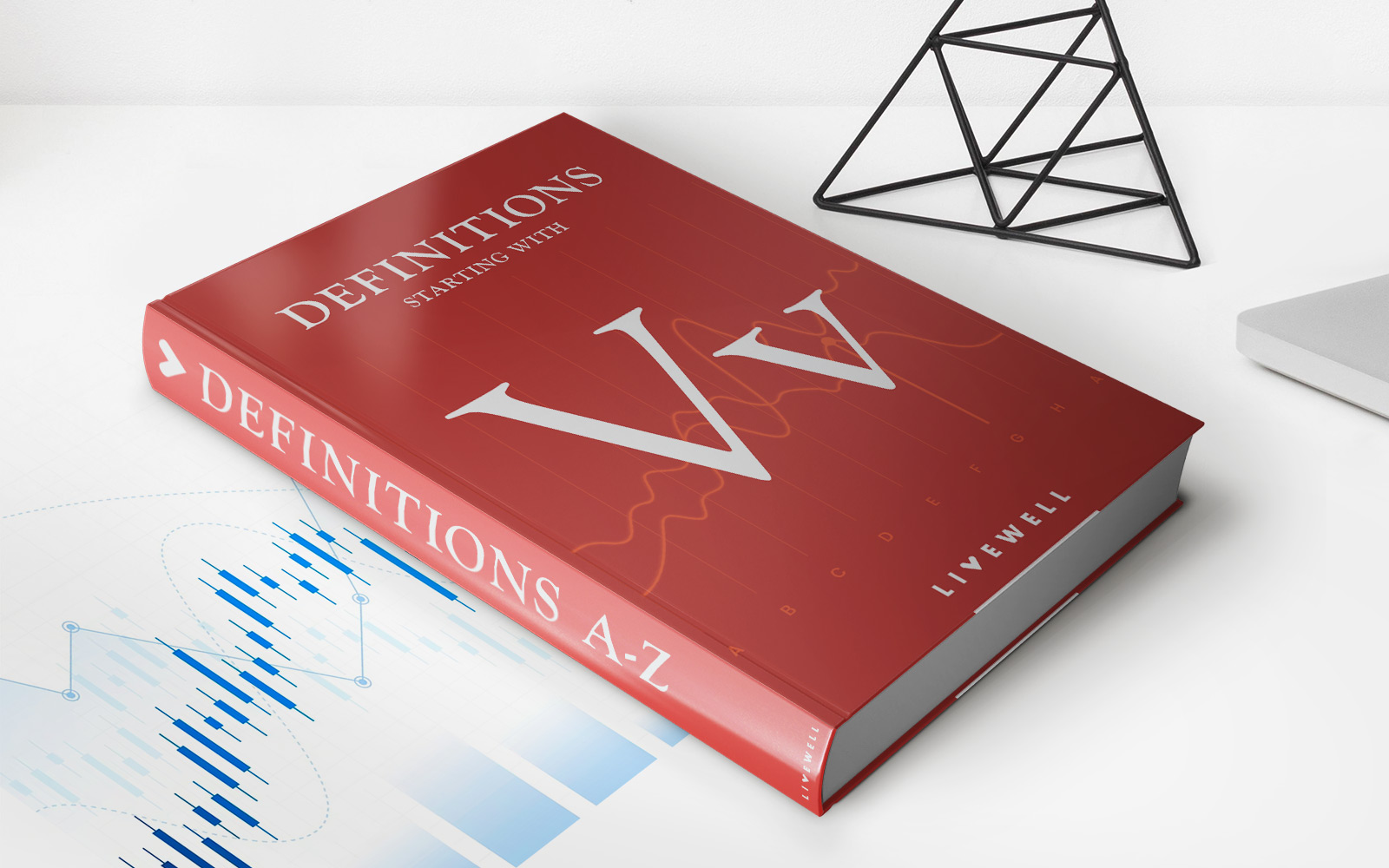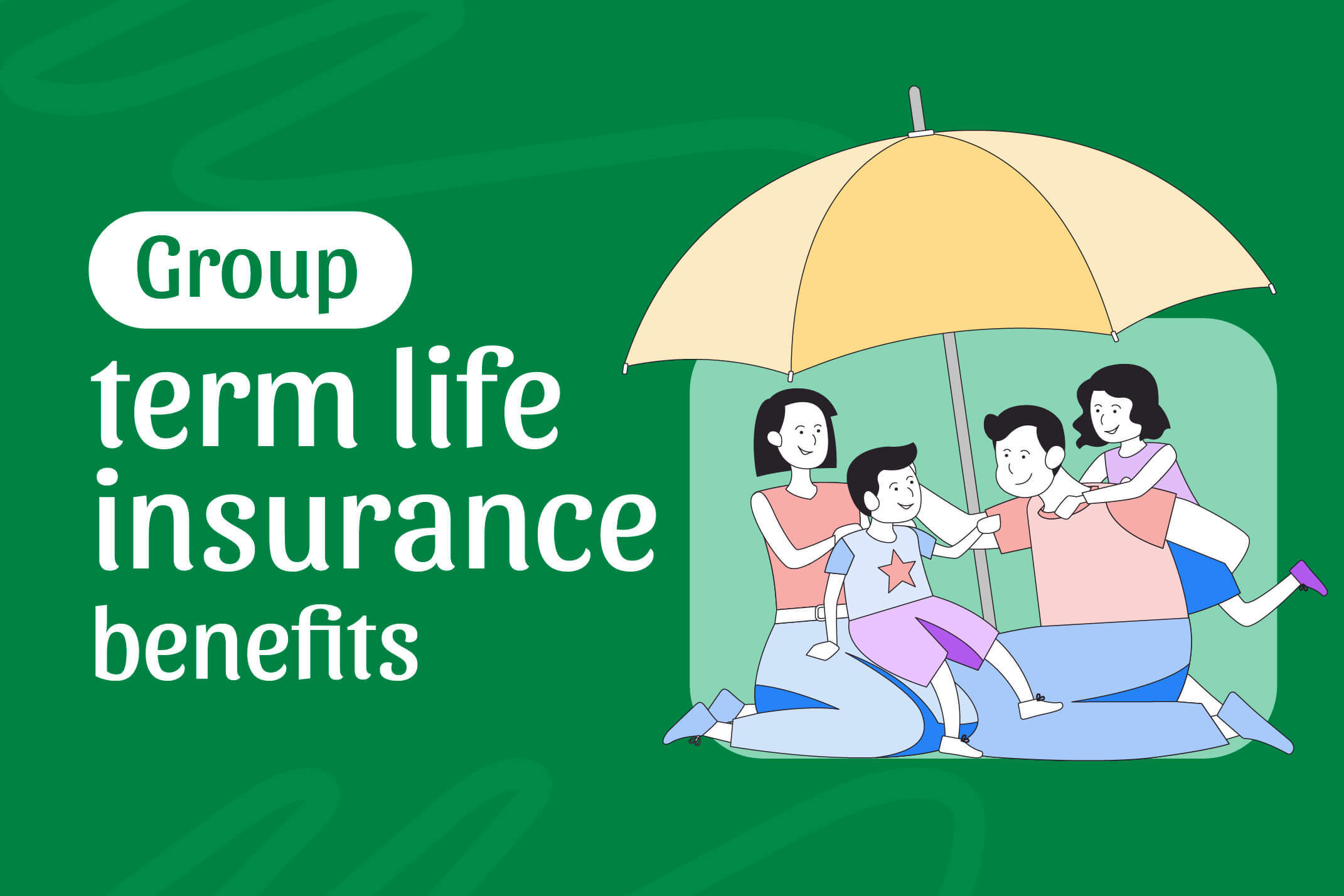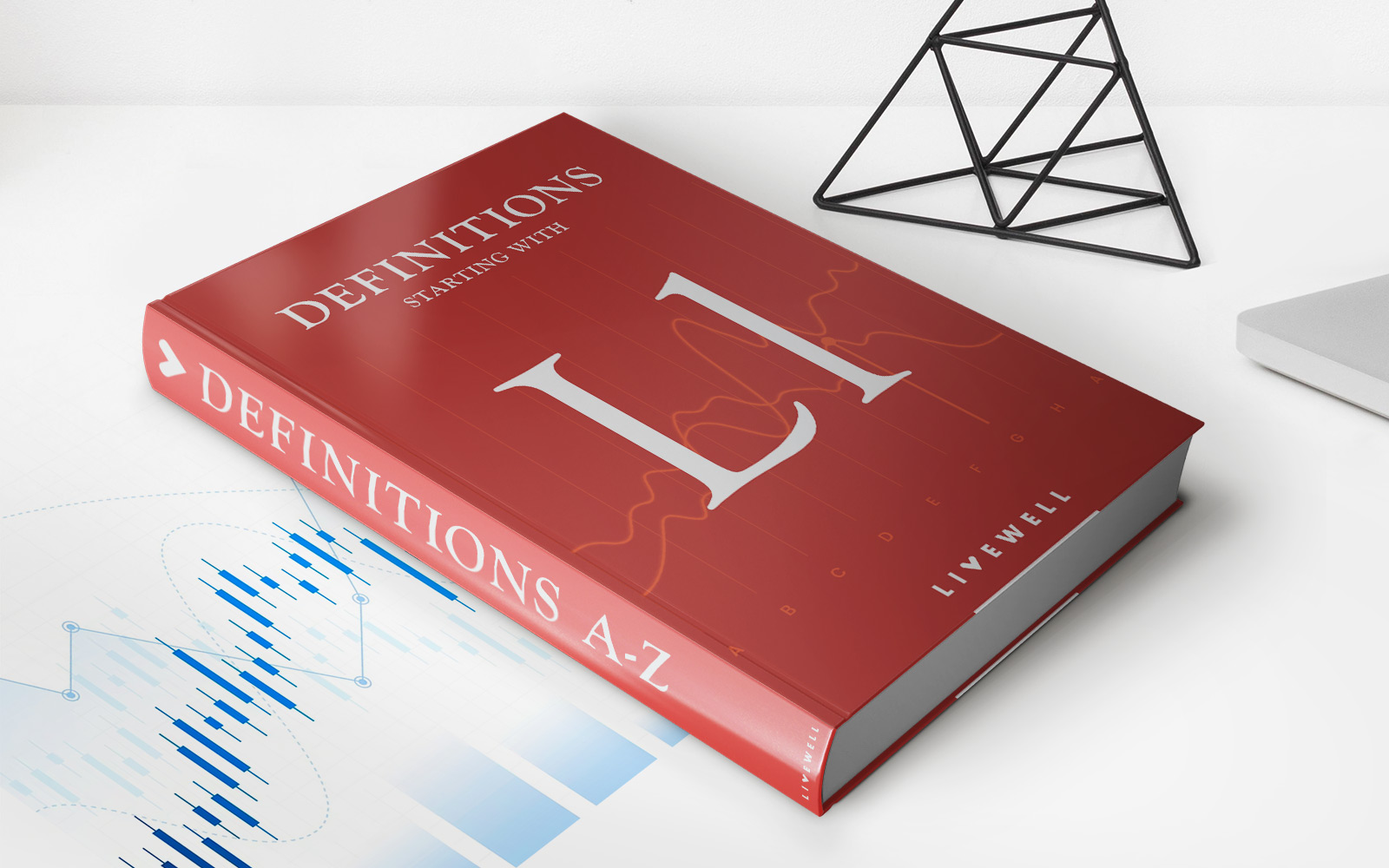

Finance
What Is Voluntary Term Life Insurance?
Published: November 8, 2023
Voluntary term life insurance is a financial product that provides coverage for a specified period. Understand its benefits and consider it as part of your financial planning.
(Many of the links in this article redirect to a specific reviewed product. Your purchase of these products through affiliate links helps to generate commission for LiveWell, at no extra cost. Learn more)
Table of Contents
- Introduction
- Definition of Voluntary Term Life Insurance
- Key Features of Voluntary Term Life Insurance
- Benefits of Voluntary Term Life Insurance
- Eligibility Criteria for Voluntary Term Life Insurance
- Application and Enrollment Process
- Coverage Options and Policy Terms
- Premiums and Cost of Voluntary Term Life Insurance
- Comparison with Other Types of Life Insurance
- Considerations before Choosing Voluntary Term Life Insurance
- Frequently Asked Questions (FAQs)
- Conclusion
Introduction
Life insurance is an essential financial tool that provides protection and peace of mind for individuals and their loved ones. It offers a financial safety net in the event of an untimely death by providing a lump sum payment to designated beneficiaries. One popular type of life insurance is voluntary term life insurance.
Voluntary term life insurance is a type of coverage that allows individuals to purchase life insurance through their employer or an association. It is called “voluntary” because the policyholder chooses to enroll in the coverage and pays the premiums themselves, rather than the employer covering the entire cost. This type of insurance is typically offered as a group benefit, providing employees or members with an affordable and convenient way to obtain coverage.
In this article, we will delve into the details of voluntary term life insurance, exploring its definition, key features, benefits, eligibility criteria, application and enrollment process, coverage options, policy terms, premiums, and cost. We will also compare voluntary term life insurance with other types of life insurance to help you understand its unique advantages. Lastly, we will provide important considerations to keep in mind before choosing voluntary term life insurance as well as address frequently asked questions.
By the end of this article, you will have a comprehensive understanding of what voluntary term life insurance is and whether it is the right choice for your financial needs and goals. So, let’s dive in and explore the world of voluntary term life insurance!
Definition of Voluntary Term Life Insurance
Voluntary term life insurance is a type of life insurance that allows individuals to purchase coverage through their employer or an association on a voluntary basis. Unlike traditional employer-sponsored life insurance, where the employer pays the premium, in voluntary term life insurance, the policyholder chooses to enroll in the coverage and pays the premiums themselves.
This type of insurance is typically offered as a group benefit, providing employees or members with the opportunity to obtain life insurance at affordable group rates. It is important to note that voluntary term life insurance is typically term-based, meaning it provides coverage for a specific period, such as 10, 20, or 30 years. If the policyholder passes away during the policy term and the death is covered under the policy, a lump sum payment, known as the death benefit, is paid out to the designated beneficiaries.
The coverage and benefits of voluntary term life insurance can vary depending on the specific policy and its terms and conditions. However, in general, voluntary term life insurance provides a straightforward form of financial protection for the policyholder’s loved ones in the event of their untimely death.
It is important to understand that voluntary term life insurance is distinct from other types of life insurance, such as employer-sponsored group life insurance or individual term life insurance. Voluntary term life insurance is often more flexible than employer-sponsored group life insurance, as the policyholder has more control over choosing the coverage amount and can typically continue coverage even if they leave their job (subject to certain conditions).
In summary, voluntary term life insurance is a type of life insurance that provides individuals with the opportunity to purchase coverage through their employer or an association. It is voluntary in the sense that the policyholder chooses to enroll in the coverage and pays the premiums themselves. By providing a lump sum payment to designated beneficiaries in the event of the policyholder’s death during the policy term, voluntary term life insurance offers financial protection and security for the policyholder’s loved ones.
Key Features of Voluntary Term Life Insurance
Voluntary term life insurance offers several key features that make it an attractive option for individuals seeking life insurance coverage. Understanding these features can help you determine whether this type of insurance aligns with your needs and financial goals. Let’s take a closer look at the key features of voluntary term life insurance:
- Choice and Flexibility: One of the primary advantages of voluntary term life insurance is the ability to choose the coverage amount that suits your needs. Policyholders have the flexibility to select a death benefit amount based on their financial obligations, such as paying off a mortgage, funding their child’s education, or providing for their loved ones in the event of their passing.
- Affordability: Voluntary term life insurance is often more affordable compared to other types of life insurance, such as permanent policies. The group nature of this insurance, combined with the employer or association negotiating rates and spreading the risk among a larger pool of individuals, helps keep premiums relatively low. This affordability makes it an accessible option for individuals who may not qualify for or afford more expensive coverage.
- Portability: Unlike traditional employer-sponsored life insurance, voluntary term life insurance typically offers portability. This means that if you leave your job, you may have the opportunity to continue your coverage by converting it to an individual policy without having to undergo a medical exam. Portability provides peace of mind, ensuring that you maintain coverage even if your employment situation changes.
- Guaranteed Renewability: Depending on the policy, voluntary term life insurance may offer guaranteed renewability. This means that as long as you continue to pay the premiums, the insurance company cannot cancel your coverage or increase your premiums based on changes in your health.
- Accelerated Death Benefit: Some voluntary term life insurance policies may include an accelerated death benefit rider. This feature allows policyholders diagnosed with a terminal illness to access a portion of their death benefit while they are still alive. The accelerated death benefit can be used to cover medical expenses or other financial needs.
These key features demonstrate the flexibility, affordability, and protection that voluntary term life insurance can provide. By having the ability to choose the desired coverage amount, affordable premiums, and portability options, individuals can customize their insurance to meet their specific needs and circumstances.
Benefits of Voluntary Term Life Insurance
Voluntary term life insurance offers a range of benefits that make it an attractive option for individuals seeking financial protection for their loved ones. Understanding these benefits can help you make an informed decision about whether voluntary term life insurance is the right choice for you. Let’s explore some of the key benefits:
- Financial Protection: The primary benefit of voluntary term life insurance is the financial protection it provides to your loved ones in the event of your untimely death. The death benefit paid out to your designated beneficiaries can help them replace lost income, cover daily living expenses, pay off outstanding debts, such as a mortgage or student loans, and maintain their quality of life.
- Flexibility: Voluntary term life insurance offers flexibility in coverage options. Policyholders can choose a coverage amount that aligns with their specific needs and financial goals. Whether you want to provide a modest benefit or a substantial safety net, voluntary term life insurance allows you to customize the policy to meet your requirements.
- Peace of Mind: Having voluntary term life insurance can provide peace of mind, knowing that your loved ones will be financially protected in your absence. It can alleviate worries about their future financial stability and allow you to focus on living your life to the fullest.
- Affordability: Voluntary term life insurance is often more affordable compared to other types of life insurance, especially permanent policies. The group rates negotiated by employers or associations help keep the premiums lower, making it accessible for many individuals to obtain essential life insurance coverage.
- Tax Benefits: In many cases, the premiums paid for voluntary term life insurance are not taxable. Additionally, the death benefit received by your beneficiaries is typically tax-free, providing them with a significant financial benefit.
- Employee Benefits: Voluntary term life insurance is often offered as an employee benefit, allowing you to take advantage of group rates and convenient payroll deductions. This benefit can be especially valuable if you’re unable to obtain affordable life insurance coverage through other avenues.
These benefits reflect the importance of voluntary term life insurance in providing financial security and peace of mind. The flexibility, affordability, and protection it offers make it a valuable option for individuals looking for affordable and customizable life insurance coverage.
Eligibility Criteria for Voluntary Term Life Insurance
In order to enroll in voluntary term life insurance, there are certain eligibility criteria that individuals must meet. While specific requirements may vary depending on the insurance provider and policy, let’s explore the general eligibility criteria for voluntary term life insurance:
- Employment or Association Membership: Voluntary term life insurance is typically offered through an employer or association. To be eligible, individuals must be employed by the company offering the insurance or be a member of the association providing the coverage. This means that eligibility may be contingent on your employment status with the company or your active membership in the association.
- Enrollment Period: Most voluntary term life insurance policies have specific enrollment periods during which employees or members can sign up for coverage. These enrollment periods are typically offered annually or during specified open enrollment periods. It is important to be aware of the enrollment period and ensure that you enroll within the designated timeframe to secure coverage.
- Minimum Employment Hours: Some employers may require a minimum number of hours worked per week or month in order to be eligible for voluntary term life insurance. This requirement ensures that part-time employees or individuals with limited hours are not eligible for coverage. The specific minimum hour requirement can vary depending on the employer’s policies.
- Medical Underwriting: Depending on the insurance provider, individuals may be required to undergo medical underwriting as part of the eligibility process. This typically involves answering health-related questions and may require a medical examination or review of medical records. The purpose of medical underwriting is to assess the individual’s health and determine the risk associated with providing coverage.
- No Existing Health Issues: Some insurance providers may have restrictions on pre-existing health conditions during the initial coverage period. This means that individuals with certain medical conditions may not be eligible for coverage until a specified waiting period has elapsed.
It is important to note that while these are general eligibility criteria for voluntary term life insurance, the specific requirements can differ among insurance providers and policies. It is recommended to review the details of the policy offered by your employer or association to determine your eligibility and any additional criteria that may apply.
Overall, voluntary term life insurance offers an accessible and convenient way for individuals to obtain life insurance coverage. By meeting the eligibility criteria, you can secure this important financial protection for yourself and your loved ones.
Application and Enrollment Process
The application and enrollment process for voluntary term life insurance is typically straightforward and convenient, as it is often offered through employers or associations. Let’s explore the general steps involved in applying for and enrolling in voluntary term life insurance:
- Receive Enrollment Information: The first step in the process is receiving enrollment information from your employer or association. This may include details about the voluntary term life insurance coverage, including the coverage options, premiums, and any additional benefits or riders available.
- Review the Coverage Options: Take the time to carefully review the coverage options provided. Consider factors like the desired death benefit amount, policy term, and any potential riders or additional features that may be available. Assessing your needs and financial goals will help you select the most suitable coverage.
- Complete the Application: Once you have made a decision, complete the insurance application provided by your employer or association. The application will typically require personal information, such as your name, date of birth, address, and contact details. It may also ask health-related questions to assess your eligibility.
- Provide Necessary Documentation: If required, you may need to provide additional documentation to support your application. This could include medical records, proof of identity, and beneficiary designations. Follow any instructions provided to ensure a smooth application process.
- Submit the Application: Once you have completed the application and gathered any necessary documentation, submit the application to the designated entity, such as the human resources department in the case of employer-sponsored coverage. Ensure that you meet any specified deadlines for submission.
- Review Confirmation and Documentation: After submitting your application, you will typically receive a confirmation or acknowledgement that your application has been received. Review this confirmation and any accompanying documentation to ensure accuracy and to understand the next steps in the process.
- Pay the Premium: Once your application is approved, you will be required to pay the premiums for the voluntary term life insurance coverage. Depending on the arrangement with your employer or association, premiums are typically deducted from your paycheck or facilitated through other payment methods.
- Receive Policy Information: Once your application is processed and the premiums are paid, you will receive a policy document that outlines the details of your voluntary term life insurance coverage. Review this document carefully to understand the terms, conditions, and benefits of your policy.
It’s important to note that the specific steps and requirements may vary depending on the insurance provider and the policies set by your employer or association. Be sure to follow the instructions provided and reach out to the appropriate contact person or department if you have any questions or need clarification during the application and enrollment process.
By following these steps and completing the necessary paperwork, you can successfully apply for and enroll in voluntary term life insurance, providing you and your loved ones with the financial protection and peace of mind that comes with having life insurance coverage.
Coverage Options and Policy Terms
Voluntary term life insurance offers various coverage options and policy terms to suit the needs and preferences of the policyholder. Understanding these options and terms is essential in selecting the most appropriate coverage. Let’s explore the typical coverage options and policy terms associated with voluntary term life insurance:
- Coverage Amount: The coverage amount, also known as the death benefit, is the amount of money that will be paid to the beneficiaries upon the policyholder’s death. The coverage amount can typically range from a minimum value, often set by the insurance provider, to a maximum value based on factors like income and financial needs. Policyholders should consider their financial obligations and the financial security they would like to provide to their loved ones when selecting the coverage amount.
- Policy Term: The policy term refers to the length of time for which the policy will be in effect. Voluntary term life insurance policies usually offer terms in increments of 10, 20, or 30 years. It’s important to select a policy term that aligns with your anticipated financial responsibilities and the duration of your need for life insurance coverage. For example, if you have young children who will depend on your financial support until they reach adulthood, you may opt for a longer policy term to ensure they are protected throughout that period.
- Renewability: Some voluntary term life insurance policies include the option to renew the coverage at the end of the initial policy term. This allows policyholders to extend their coverage beyond the initial term without undergoing medical underwriting again. However, the premiums for the renewed policy term may increase. It’s important to review the renewal provisions of the policy to understand the terms and conditions.
- Conversion Options: Depending on the policy, voluntary term life insurance may offer conversion options. This means that the policyholder may have the ability to convert their term policy into a permanent life insurance policy, such as whole life or universal life insurance. Conversion options can provide flexibility for policyholders who may wish to adjust their coverage later in life without needing to undergo additional underwriting.
- Riders and Additional Benefits: Voluntary term life insurance policies may offer optional riders or additional benefits that can enhance the coverage. Some common riders include accelerated death benefit riders, which allow policyholders to access a portion of the death benefit in the event of a terminal illness, or a waiver of premium rider, which waives premium payments if the policyholder becomes disabled. It’s important to review the available riders and additional benefits to determine if they align with your specific needs and circumstances.
It’s crucial to carefully consider the coverage options and policy terms when selecting voluntary term life insurance. Assess your financial goals, responsibilities, and future plans to determine the appropriate coverage amount, policy term, and any additional features that will best protect your loved ones and provide the desired financial security.
Remember, policy terms and coverage options can vary depending on the specific policy and insurance provider. Take the time to review the details of the policy offered to you, and consult with an insurance professional if needed, to ensure you understand the terms and make an informed decision.
Premiums and Cost of Voluntary Term Life Insurance
The cost of voluntary term life insurance is a significant factor to consider when exploring this type of coverage. Understanding how premiums are determined and the factors that influence the cost can help you make an informed decision. Let’s delve into the details of premiums and the cost of voluntary term life insurance:
The premiums for voluntary term life insurance are the regular payments made by the policyholder to maintain the coverage. These payments are typically made on a monthly or annual basis and contribute to the overall cost of the insurance policy. Various factors can influence the cost of premiums, including:
- Age: Age is a significant factor in determining the cost of life insurance premiums. Generally, younger individuals tend to pay lower premiums as they are considered lower risk. As individuals age, the risk of health issues and mortality increases, leading to higher premiums.
- Health Status: Your health condition and medical history will also be considered when determining the cost of premiums. Insurance providers may ask health-related questions or request a medical exam to assess your health. Individuals with pre-existing medical conditions or unhealthy lifestyles may face higher premiums.
- Occupation and Hobbies: Certain occupations or hobbies considered risky or hazardous may result in higher premiums. Jobs that involve high physical risk or exposure to dangerous environments may be viewed as increasing the likelihood of a claim, thus raising the cost of premiums.
- Coverage Amount and Policy Term: The coverage amount and policy term you choose will also impact the cost of premiums. Generally, higher coverage amounts and longer policy terms will result in higher premiums since the insurance company is taking on a larger potential liability over a longer period.
- Gender: In some cases, gender may influence the cost of premiums. Statistically, women tend to have longer life expectancies and lower mortality rates, which can result in lower premiums compared to men.
In addition to these factors, insurance providers may also consider other individual characteristics and underwriting criteria specific to the policyholder when determining premium costs.
To get an accurate estimate of the cost of voluntary term life insurance, it is recommended to request quotes from multiple insurance providers. By comparing the premiums offered by different companies, you can find the most competitive rates for the desired coverage amount and policy terms.
Remember, while affordability is an important consideration, it’s crucial to strike a balance between cost and the coverage provided. Ensure that the premium cost aligns with your budget while still providing adequate financial protection for your loved ones.
By understanding the factors that influence premium costs and obtaining quotes from reputable insurance providers, you can make an informed decision regarding the cost of voluntary term life insurance and select a policy that meets both your financial needs and preferences.
Comparison with Other Types of Life Insurance
When considering life insurance options, it’s important to understand the differences between voluntary term life insurance and other types of life insurance. Let’s compare voluntary term life insurance with two common alternatives: whole life insurance and universal life insurance:
- Voluntary Term Life Insurance: Voluntary term life insurance provides coverage for a specified term, typically 10, 20, or 30 years. It offers a death benefit paid out to beneficiaries if the policyholder passes away during the term. This type of insurance is often more affordable compared to whole life or universal life insurance due to its limited coverage period. Voluntary term life insurance does not include a cash value component and is primarily designed to provide financial protection for a specific period. It suits individuals who require coverage for a certain period and want affordability and simplicity in their life insurance.
- Whole Life Insurance: Whole life insurance is a permanent life insurance option that provides coverage for the entire lifetime of the policyholder, as long as premiums are paid. Whole life insurance includes a cash value component that grows over time, allowing policyholders to accumulate savings that can be accessed during their lifetime. Premiums for whole life insurance are generally higher than those of voluntary term life insurance due to the lifetime coverage and cash value accumulation. Whole life insurance is suitable for individuals who want lifelong coverage, potential tax advantages, and the ability to build up cash value over time.
- Universal Life Insurance: Universal life insurance is another type of permanent life insurance that combines a death benefit with a cash value component. It offers more flexibility than whole life insurance, allowing policyholders to adjust their premiums and death benefit amounts as needed. Universal life insurance offers the opportunity for cash value growth based on interest rates, but the performance is also subject to market fluctuations. Premiums for universal life insurance may vary depending on the chosen death benefit, premium payment schedule, cash value accumulation, and other factors. Universal life insurance is suitable for individuals who want flexible premium payments, the ability to adjust death benefit amounts, and the potential to build cash value.
When comparing voluntary term life insurance to whole life insurance and universal life insurance, the key considerations include affordability, coverage duration, cash value accumulation, premium flexibility, and lifetime coverage. It’s important to assess your financial needs and goals, budget, and risk appetite to determine the type of life insurance that aligns best with your circumstances.
Each type of life insurance offers its own advantages and disadvantages. Voluntary term life insurance provides affordable and straightforward coverage for a specific term, while whole life insurance and universal life insurance offer permanent coverage with cash value accumulation. Consulting with a financial advisor or insurance professional can help you evaluate your options and select the most suitable type of life insurance for your needs.
Considerations before Choosing Voluntary Term Life Insurance
Before deciding to purchase voluntary term life insurance, there are several important considerations to keep in mind. Understanding these factors can help you determine whether this type of coverage aligns with your specific needs and goals. Let’s explore the key considerations before choosing voluntary term life insurance:
- Financial Needs: Evaluate your financial responsibilities and obligations to determine the appropriate coverage amount. Consider factors such as mortgage or rent payments, outstanding debts, education costs, and the financial support you want to provide to your loved ones in case of your untimely passing.
- Coverage Duration: Assess how long you will need life insurance coverage. Voluntary term life insurance provides coverage for a specific term, such as 10, 20, or 30 years. Ensure that the length of coverage aligns with your anticipated financial responsibilities and the timeframe during which your loved ones will depend on your financial support.
- Affordability: Review your budget to ensure that you can comfortably afford the premiums for the voluntary term life insurance coverage. While voluntary term life insurance tends to be more affordable compared to permanent life insurance options, it’s essential to select a coverage level that fits within your financial means.
- Portability: Consider the portability options of the voluntary term life insurance policy. If there is a possibility that you may change jobs or membership in the association offering the coverage, having a portable policy will allow you to maintain coverage even in different employment or membership situations.
- Renewability: Check if the voluntary term life insurance policy offers the option to renew coverage at the end of the initial term. This can be beneficial if you anticipate the need for coverage beyond the initial term without the hassle of undergoing additional underwriting.
- Additional Features and Riders: Take into account any additional features or riders offered with the voluntary term life insurance policy. Optional riders, such as accelerated death benefit or waiver of premium, can enhance the coverage by providing additional protection or benefits.
- Health and Underwriting: Be aware that health plays a role in determining eligibility and premium rates for voluntary term life insurance. Depending on the insurance provider, you may be subjected to medical underwriting, which can involve health-related questions or a medical examination. Understand how your health may impact your eligibility and premiums.
By carefully considering these factors, you can make an informed decision about whether voluntary term life insurance is the right choice for your financial needs and goals. It’s important to review the details of the policy provided by your employer or association, seek professional guidance if necessary, and ensure that the policy aligns with your budget and long-term objectives.
Remember that life insurance needs can change over time, so it may be helpful to revisit and reassess your coverage periodically to ensure it continues to meet your evolving needs.
Frequently Asked Questions (FAQs)
Here are some common questions individuals often have about voluntary term life insurance:
- Can I get voluntary term life insurance if my employer doesn’t offer it?
- Can I change my coverage amount during the policy term?
- What happens if I leave my job or association?
- Can I convert my voluntary term life insurance policy to a permanent policy?
- Can I have voluntary term life insurance in addition to other life insurance policies?
The availability of voluntary term life insurance depends on whether your employer or association offers it as a benefit. If it is not offered through your employer or association, you may consider exploring other life insurance options, such as individual term life insurance or working with an insurance agent to find coverage that suits your needs.
The flexibility to change your coverage amount during the policy term may vary depending on the specific policy and insurance provider. It’s important to review the terms and conditions of your policy to understand if adjustments to the coverage amount are allowed and any limitations or requirements associated with making changes.
If you leave your job or association, some voluntary term life insurance policies offer portability, allowing you to continue coverage even after leaving. However, it’s important to review the policy details to understand any limitations or conditions for maintaining coverage outside of the original group arrangement.
Conversion options vary depending on the specific policy and insurance provider. Some voluntary term life insurance policies offer the option to convert to a permanent life insurance policy, such as whole life or universal life insurance, without undergoing additional underwriting. It’s important to review the policy terms to understand if conversion is available and any associated requirements or limitations.
Yes, it is possible to have voluntary term life insurance in addition to other life insurance policies. Voluntary term life insurance can be a supplemental coverage option to provide an additional layer of financial protection. However, it’s important to review your specific insurance needs and budget to ensure you are not overinsured and to determine the best combination of coverage for your circumstances.
Keep in mind that the answers to these questions may vary depending on the specific policy and insurance provider. It is recommended to review the details of your policy, consult with an insurance professional, and ask any additional questions you may have to gain a clear understanding of the coverage and its terms and conditions.
Conclusion
Voluntary term life insurance offers individuals a flexible and affordable way to obtain life insurance coverage through their employer or association. It provides financial protection to loved ones in the event of the policyholder’s untimely death during the specified term. By understanding the key features, benefits, eligibility criteria, application process, coverage options, premiums, and considerations associated with voluntary term life insurance, individuals can make informed decisions about whether this type of coverage is suitable for their needs.
Voluntary term life insurance stands out for its affordability, choice and flexibility in coverage, portability options, and guaranteed renewability. It benefits individuals by offering financial protection, peace of mind, and the ability to customize coverage based on specific needs and circumstances. By considering factors such as financial responsibilities, coverage duration, affordability, and additional features, individuals can assess whether voluntary term life insurance aligns with their goals.
It is important to compare voluntary term life insurance with other types of life insurance, such as whole life insurance and universal life insurance, to determine the most suitable coverage option. Voluntary term life insurance’s temporary nature distinguishes it from permanent policies, but it offers simplicity, affordability, and accessibility.
Before committing to voluntary term life insurance, individuals should thoroughly review the policy terms, understand their financial obligations, and seek professional advice if needed. Regularly assessing life insurance needs can ensure that coverage remains relevant and sufficient as circumstances change.
Ultimately, voluntary term life insurance can serve as a valuable financial tool to provide peace of mind and protect loved ones from potential financial hardship. By weighing the benefits, costs, and individual considerations, individuals can make an informed decision and secure the appropriate voluntary term life insurance coverage.














